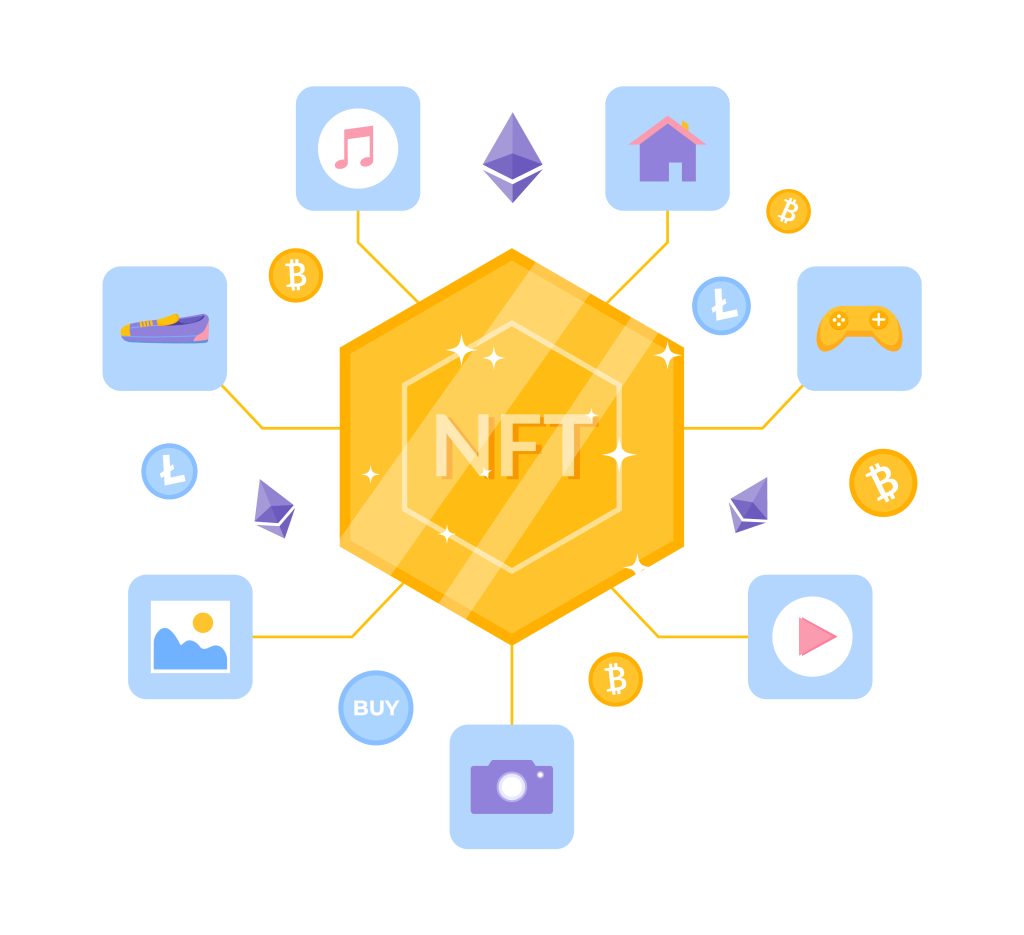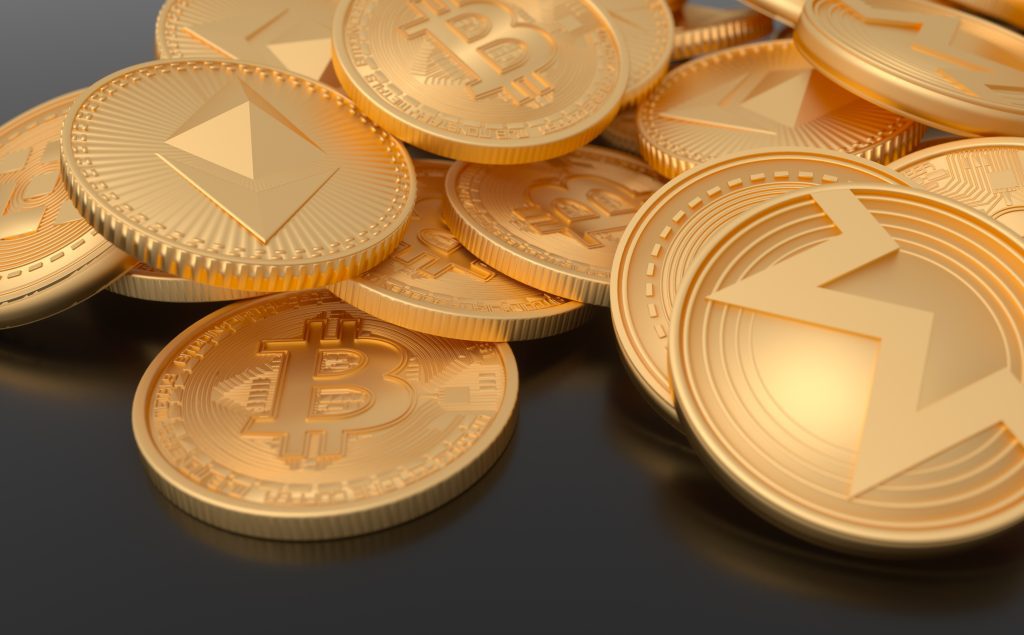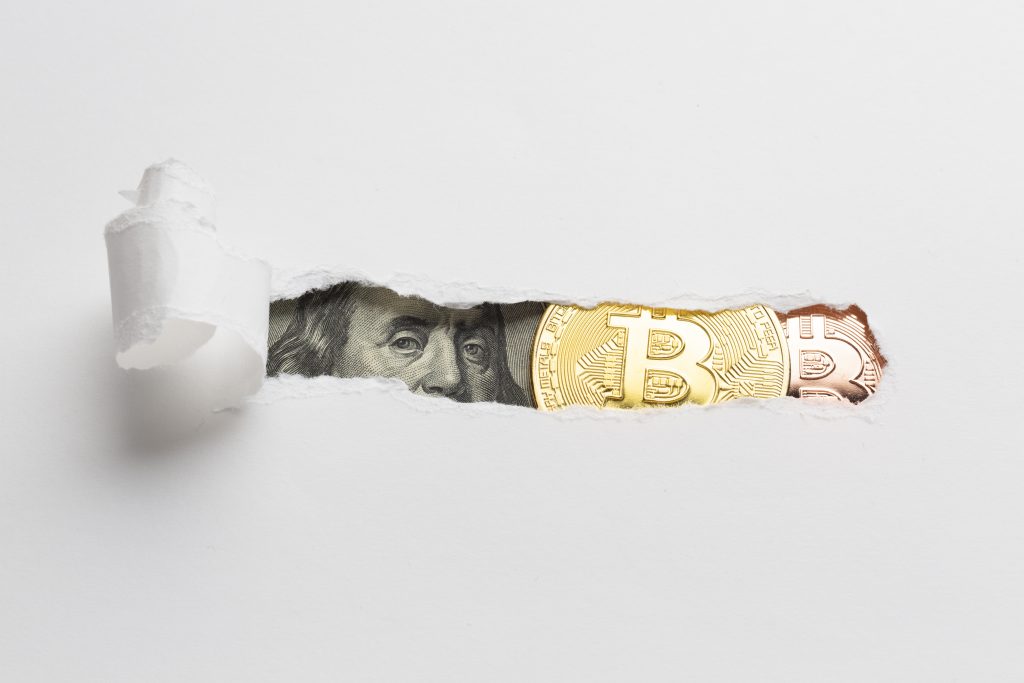Imagine you’re at a coffee shop, ready to pay for your latte with a crisp $5 bill. You don’t think twice about the specific bill you’re handing over because, to you, it’s just like any other $5 bill out there. This ability to easily exchange one item for another of the same kind and value is called fungibility, and it’s a key feature of many traditional currencies.
In the world of cryptocurrencies, fungibility plays a crucial role in how we buy, sell, and trade digital assets. As you delve into the realm of cryptocurrencies like Bitcoin and Ethereum, understanding fungibility will help you navigate the complexities of this ever-evolving digital landscape. In this article, we’ll explore the concept of fungibility in-depth, comparing fungible and non-fungible assets, and examining the benefits and challenges it presents for cryptocurrencies.
Understanding the Fungibility Concept for Cryptocurrencies


Fungibility is a term that might sound intimidating at first, but it’s actually quite simple. Derived from the Latin word “fungibilis,” which means “to perform” or “to serve,” fungibility refers to the property of an asset that allows it to be easily exchanged for another asset of the same kind and value. In essence, it means that one unit of a currency or commodity is indistinguishable from another and can be readily substituted.
To better grasp the concept, consider gold. Gold is a classic example of a fungible asset because an ounce of pure gold can be exchanged for another ounce of pure gold without any loss of value. Similarly, in the realm of digital currencies, certain cryptocurrencies are designed to be fungible, meaning that one unit (or token) can be swapped for another without any difference in value. This attribute is crucial for cryptocurrencies because it enables smooth transactions and ensures a consistent value across the network.
Fungible vs. Non-Fungible: Distinguishing Crypto Assets
While fungibility is a vital feature for many cryptocurrencies as to the Coinary Token, it’s essential to recognize that not all digital assets are created equal. In fact, there’s an entire class of crypto assets that are explicitly designed to be non-fungible. To help you better understand the differences between fungible and non-fungible crypto assets, we’ll break them down and provide a comparison.
Fungible Crypto Assets
Fungible cryptocurrencies, like Bitcoin and Ethereum, possess several key characteristics:
- Interchangeability: Each unit of a fungible cryptocurrency is identical and can be easily exchanged for another unit of the same kind and value.
- Divisibility: Fungible assets can be divided into smaller units without losing their value (e.g., 1 Bitcoin can be split into 100 million satoshis).
- Uniformity: All units of a fungible cryptocurrency share the same properties and features, ensuring a consistent value and user experience.
Non-Fungible Crypto Assets
Non-fungible cryptocurrencies, like Non-Fungible Tokens (NFTs), have distinct attributes that set them apart:
- Uniqueness: Each non-fungible asset is one-of-a-kind and cannot be directly exchanged for another asset of equal value.
- Indivisibility: Non-fungible assets cannot be divided into smaller units without altering their inherent value or characteristics.
- Rarity: The value of non-fungible assets often stems from their scarcity, exclusivity, or the specific properties that make them unique. Take for example the Poison Dragons in Dragonary.
As you can see, fungible and non-fungible crypto assets cater to different needs and purposes within the digital asset ecosystem. While fungible assets are well-suited for everyday transactions and maintaining a stable value, non-fungible assets serve a more specialized role, often representing collectibles, digital art, or unique digital assets with distinct characteristics.
The Advantages of Fungible Cryptocurrencies: Greater Liquidity and Privacy


Fungible cryptocurrencies offer several advantages that make them attractive to users, investors, and traders alike. Some of the key benefits of using fungible cryptocurrencies include:
- Liquidity: Fungible assets have a high degree of liquidity, meaning they can be easily bought and sold on the market. This is essential for traders and investors who need to quickly move in and out of positions to capitalize on market opportunities.
- Privacy: Fungible cryptocurrencies often provide a level of privacy for users, as transactions can be more challenging to trace when individual units of a currency are indistinguishable from one another. This feature is particularly valuable for individuals who prioritize transactional privacy or wish to maintain a degree of anonymity when using digital currencies.
- Ease of Exchange: Fungible assets can be readily exchanged for goods and services or other cryptocurrencies, simplifying the process of using digital currencies in everyday transactions. This ease of exchange is crucial for the widespread adoption of cryptocurrencies as a viable alternative to traditional currencies.
- Price Stability: As each unit of a fungible cryptocurrency holds the same value, it is less likely that individual tokens will experience dramatic fluctuations in price. This stability can be appealing to users and investors looking for a more predictable and less volatile asset.
Non-Fungible Tokens (NFTs): Pioneering Unique Digital Assets


The emergence of Non-Fungible Tokens (NFTs) has revolutionized the digital asset landscape by offering an entirely new way to own, trade, and sell unique digital assets. These tokens are based on blockchain technology and represent one-of-a-kind items, ranging from digital art and virtual real estate to in-game items and collectibles.
The popularity of NFTs has exploded in recent years, fueled by the desire for individuals to own and monetize digital creations in the same way they would physical art or collectibles. This means, artists and creators can now tokenize their work as NFTs, granting buyers verifiable ownership of the digital asset while retaining royalties from future sales.
Moreover, the growing market for NFTs has given rise to a flourishing ecosystem of online platforms, galleries, and marketplaces where users can buy, sell, and trade these unique digital assets. Notwithstanding, this dynamic environment has created new opportunities for investors, collectors, and creators alike, transforming the way we interact with and value digital art and collectibles.
The Double-Edged Sword of Fungibility: Challenges and Limitations in Cryptocurrencies
While fungibility offers numerous advantages for cryptocurrencies, it also presents certain challenges and limitations. Some of the key issues associated with fungibility in cryptocurrencies include:
- Privacy Concerns: The privacy-enhancing features of some fungible cryptocurrencies can also make them attractive to bad actors looking to launder money or engage in illicit activities. This has raised concerns among regulators and law enforcement agencies, prompting calls for greater oversight and regulation of privacy-focused cryptocurrencies.
- Regulatory Uncertainty: As the cryptocurrency landscape evolves, regulatory bodies around the world are grappling with how to govern digital assets and transactions. Fungibility and the privacy aspects of certain cryptocurrencies can create legal gray areas and uncertainties for users, potentially leading to complications or restrictions down the line.
- Potential for Misuse: The anonymity provided by some fungible cryptocurrencies may lead to misuse or unethical behavior, such as tax evasion, market manipulation, or other fraudulent activities. This could ultimately undermine trust in the cryptocurrency ecosystem and hinder widespread adoption.
It’s important for users, investors, and regulators to carefully consider these challenges and limitations when dealing with fungible cryptocurrencies. Balancing the advantages of fungibility with the potential risks will be crucial for the continued growth and success of the cryptocurrency market.
Fungibility Spectrum: Comparing Bitcoin, Ethereum, and Monero


Different cryptocurrencies exhibit varying degrees of fungibility, depending on their design and the technology they use. Here’s a comparison table highlighting the fungibility features of three major cryptocurrencies: Bitcoin, Ethereum, and Monero.
| Cryptocurrency | Fungibility | Privacy Features | Notes |
|---|---|---|---|
| Bitcoin | Moderate | Limited | Bitcoin transactions are pseudonymous, but their public ledger makes it possible to trace transactions to some extent. |
| Ethereum | Moderate | Limited | Similar to Bitcoin, Ethereum transactions are pseudonymous and traceable on the public ledger. However, Ethereum is working on improving privacy through layer-2 solutions and future updates. |
| Monero | High | Strong | Monero is designed as a privacy-focused cryptocurrency, using ring signatures, stealth addresses, and other technologies to enhance fungibility and protect user privacy. |
The Future of Fungibility: Privacy Coins and Layer-2 Innovations
As the cryptocurrency space continues to evolve, developers and projects are working tirelessly to enhance the fungibility and privacy of digital assets. Let’s explore some real examples of innovations in this space:
- Zcash (ZEC): Zcash is a privacy-focused cryptocurrency that uses zero-knowledge proofs (zk-SNARKs) to provide users with the option to make transactions completely private. This advanced cryptographic technique allows transactions to be verified without revealing any information about the sender, receiver, or transaction amount.
- Mimblewimble: Mimblewimble is a privacy and fungibility-focused blockchain protocol that employs a novel approach to transaction structure. By using Confidential Transactions and CoinJoin, Mimblewimble enables users to transact privately while also improving scalability. Grin and Beam are two cryptocurrencies based on the Mimblewimble protocol.
- Layer-2 Solutions: Layer-2 solutions, such as Bitcoin’s Lightning Network and Ethereum’s Optimism, are designed to improve the speed, scalability, and privacy of transactions on their respective blockchains. By creating off-chain transaction channels, these solutions can help enhance fungibility while reducing the burden on the underlying blockchain or sidechains.
These examples showcase the ongoing efforts to improve the fungibility and privacy of cryptocurrencies. As technology advances and the market matures, we can expect even more innovations in this area, making digital currencies increasingly versatile and user-friendly.
The Human Factor: Exploring the Concept of Fungibility in People and Workforce
In the world of human resources and workforce management, the concept of fungibility takes on a different meaning. Here, a fungible employee is someone who can seamlessly adapt to various roles and tasks within an organization. This versatility can be a significant asset for companies, as it enables them to be more agile and responsive to changing circumstances.
However, it’s essential to approach the concept of employee fungibility with a human touch. Organizations should be mindful of the ethical implications of treating people as interchangeable commodities and consider the potential impact on employee morale, satisfaction, and well-being.
By fostering a supportive work environment that values individual strengths and encourages skill development, companies can strike a balance between the need for versatility and the importance of recognizing each employee’s unique talents and contributions. In this way, the concept of fungibility can be applied to the workforce in a way that benefits both organizations and their employees.
Fungible Money: Unraveling the Meaning and Implications


Fungible money refers to a form of currency in which individual units are interchangeable and hold the same value. In essence, this means that one unit of currency can be easily exchanged for another, without any difference in value. For example, a $1 bill is interchangeable with another $1 bill or four quarters, as they all hold the same value.
Fungible money has several important implications for our financial systems and daily lives:
- Simplifies Transactions: The fungibility of money makes transactions and trade more straightforward. Since all units of a particular currency are of equal value, there’s no need to assess the worth of individual units during exchanges.
- Promotes Trust: Fungibility creates trust in the financial system, as users can be confident that the currency they hold or receive is of equal value to other units of the same denomination. This trust is essential for the smooth functioning of markets and economies.
- Facilitates Accounting: Fungibility enables businesses and individuals to easily manage their finances and accounts. By treating all units of a currency as equal, it becomes much simpler to track income, expenses, and other financial transactions.
Beyond the Digital Realm: Non-Fungible Goods in the Physical World
Non-fungible goods exist not only in the digital realm but also in our everyday lives. These are items that have unique characteristics, making them irreplaceable or not directly interchangeable with other items. Here are some real-life examples of non-fungible goods:
- Artwork: Paintings, sculptures, and other original works of art are non-fungible because each piece has its own unique attributes, such as the artist’s style, technique, or subject matter. The value of artwork can vary greatly, depending on factors like rarity, provenance, and demand.
- Real Estate: Properties, such as houses or apartments, are non-fungible goods because each has its own distinctive features, location, and condition. These individual characteristics make it difficult to directly exchange one property for another without considering differences in value.
- Antiques and Collectibles: Items like rare stamps, coins, or vintage cars are non-fungible because their value depends on factors like rarity, condition, and historical significance. These unique attributes make them irreplaceable and not directly interchangeable with other similar items.
- Designer Clothing and Accessories: High-end clothing and accessories from well-known designers are often considered non-fungible because they are produced in limited quantities or feature unique design elements. This exclusivity and distinctiveness contribute to their value and appeal.
Understanding the concept of non-fungible goods helps us appreciate the uniqueness and value of the items we encounter in our daily lives. Whether it’s a one-of-a-kind painting or a limited-edition handbag, these non-fungible items hold a special place in our world and often carry more than just monetary value.









